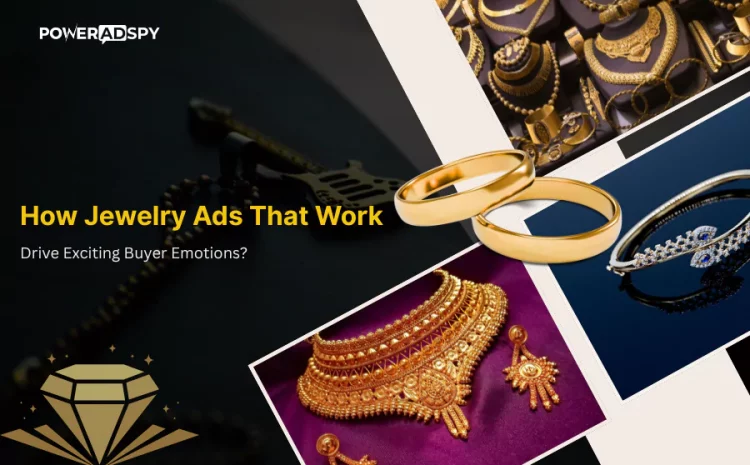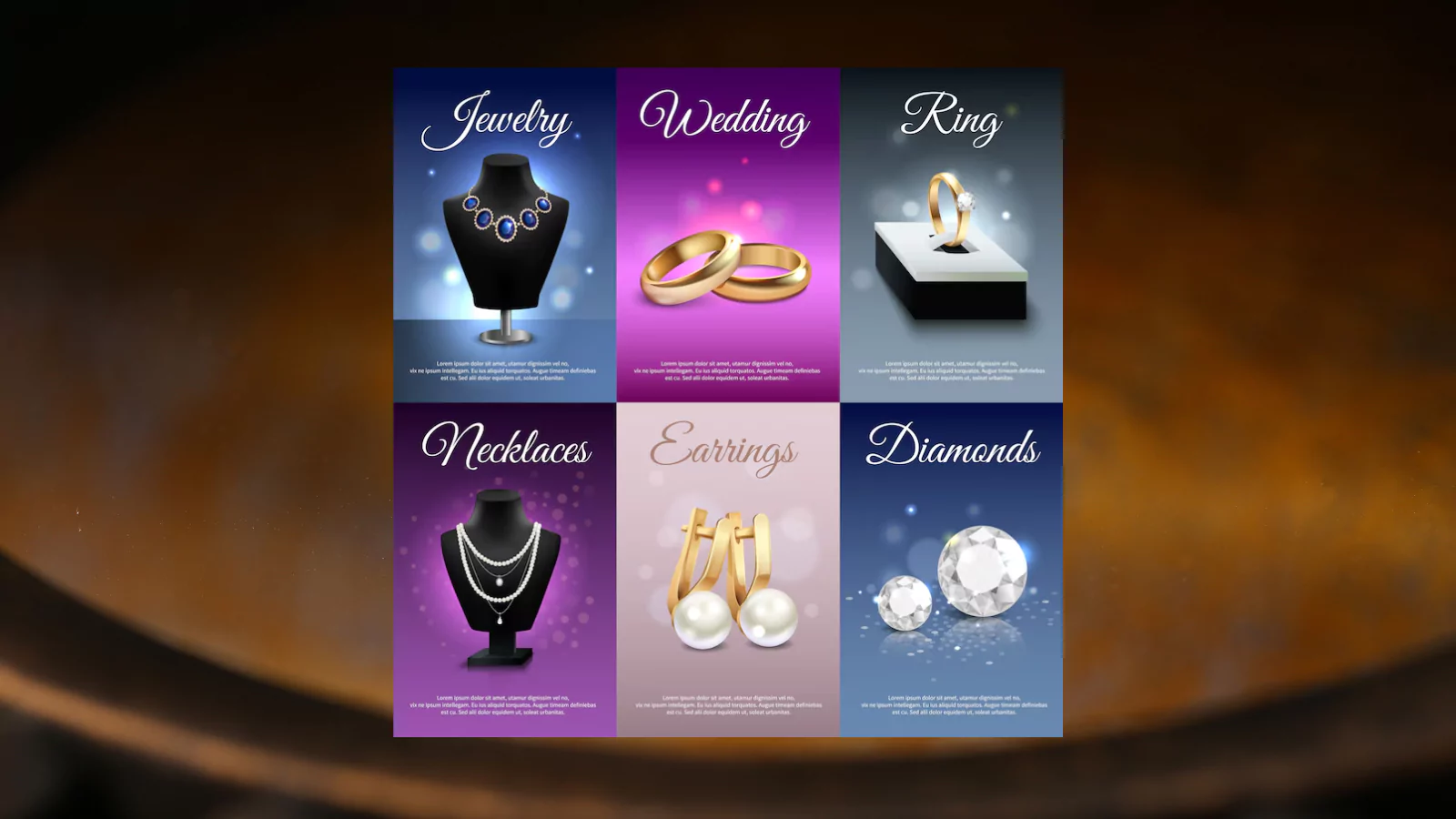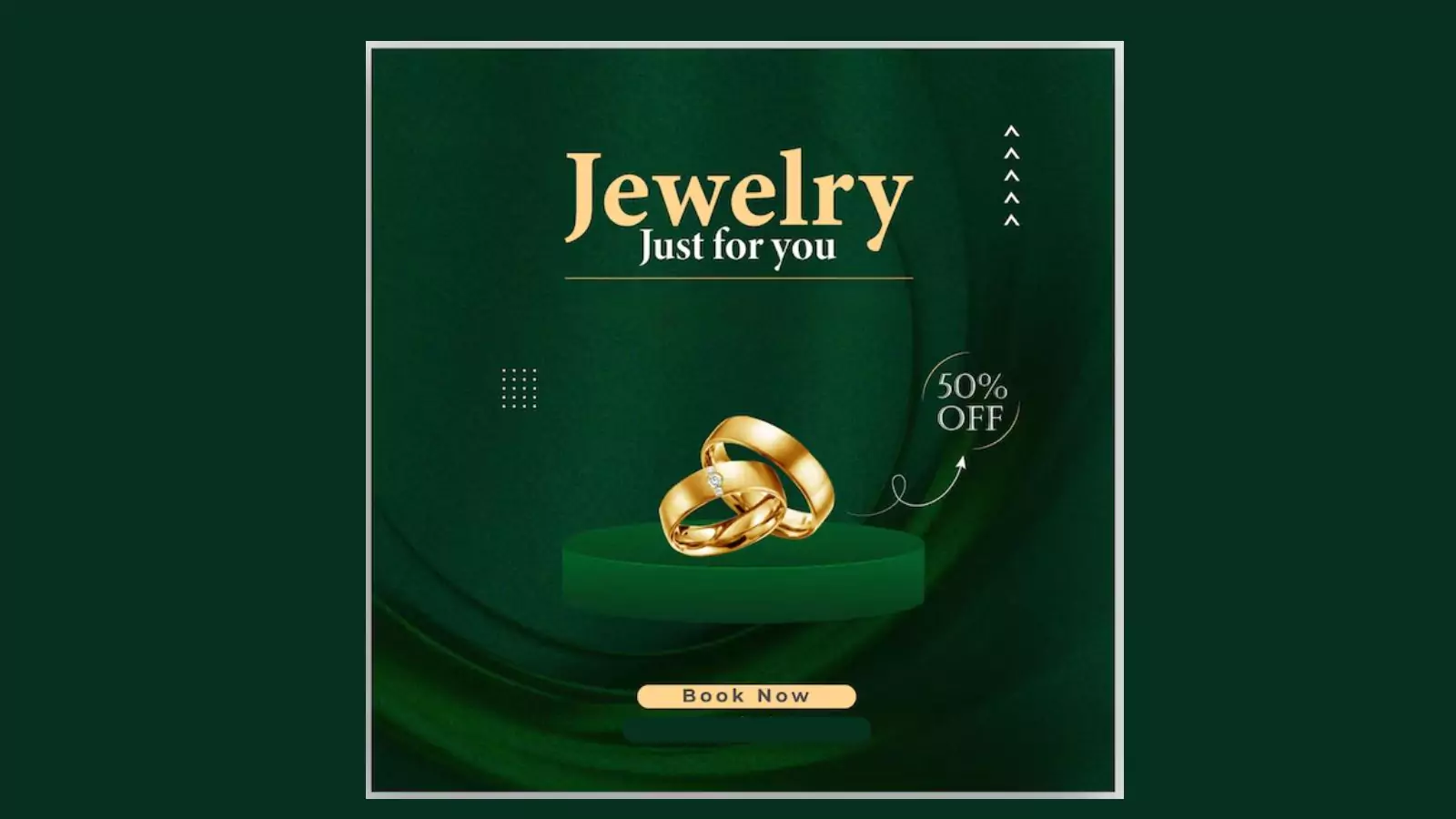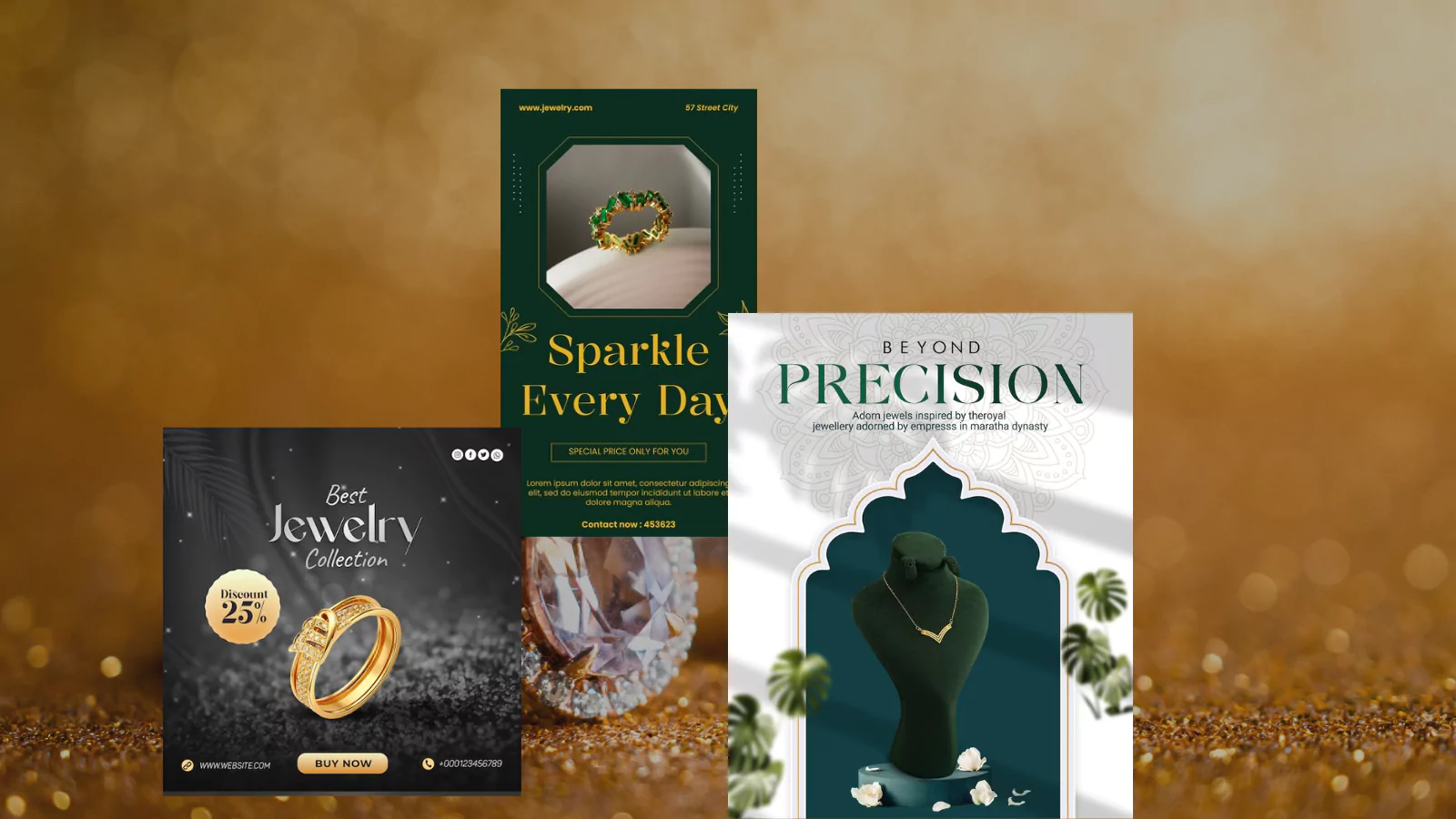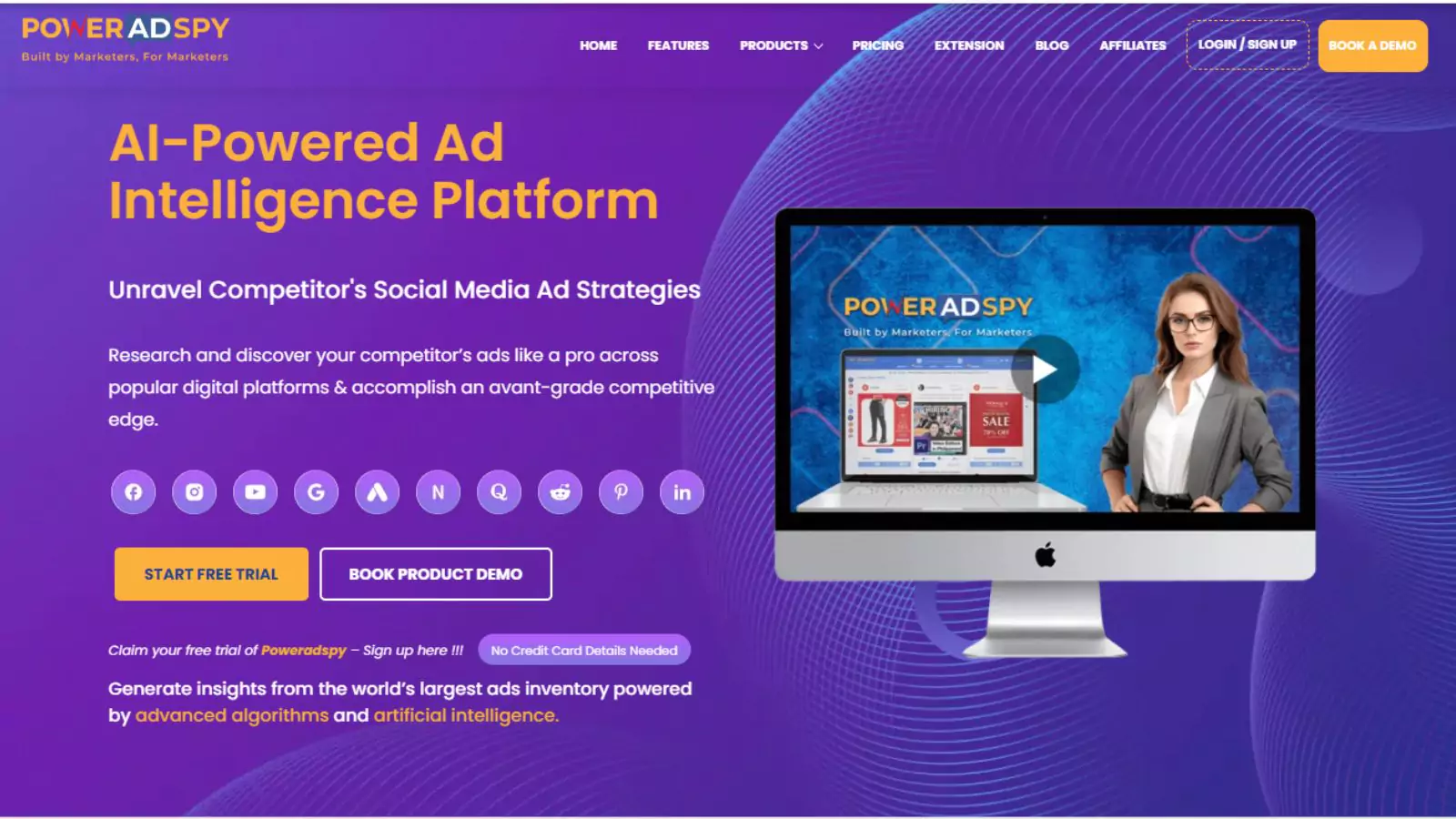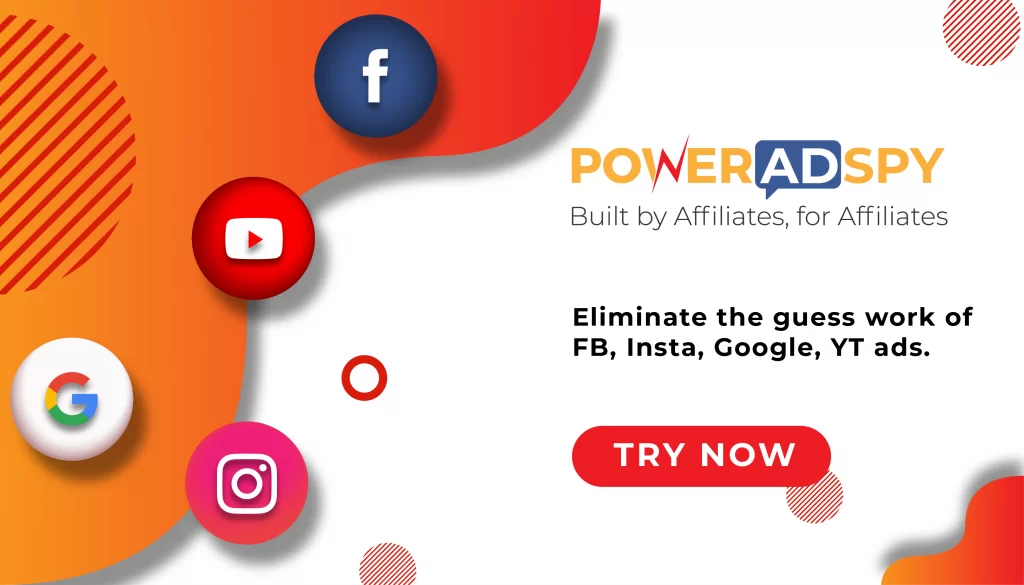How Jewelry Ads That Work Drive Exciting Buyer Emotions?
The global jewelry market is booming, with revenue expected to hit $310.9 billion in 2024, and 25.7% of sales coming from online channels. If you’re selling jewelry, whether luxury pieces or affordable fashion accessories, you need jewelry ads that work. Not just flashy visuals or catchy headlines, but ads that truly stand out, connect with your audience, and drive real sales.
But here’s the problem: most jewelry ads blend into the noise. They rely on generic product shots, weak calls to action, or vague messaging that doesn’t connect with buyers. The best-performing jewelry ads, however, do the opposite; they tell a story, evoke emotion, and make the purchase feel inevitable.
In this guide, we’ll break down what makes jewelry ads that work so effective. You’ll learn:
- Why emotional storytelling beats generic product displays
- How to craft Facebook jewelry ads that stop the scroll
- Creative jewellery ads idea that converts browsers into buyers
- Real-world jewelry advertisement examples that nailed their campaigns
By the end, you’ll have a clear blueprint for running ads that don’t just look pretty, they sell.
Listen To The Podcast Now!
Why Most Jewelry Ads Fail And Some Jewelry Ads That Work?
Jewelry occupies a unique space in commerce. Unlike buying a phone case or socks, purchasing jewelry is deeply tied to identity, relationships, and self-expression. Yet most jewelry ads make the critical mistake of treating these meaningful purchases like commodity transactions.
Consider these common pitfalls:
1. Focusing on Products Instead of Emotions
A flat image of a necklace with a price tag fails because it shows an object, not what that object represents.
What works instead:
- Aspirational messaging: Instead of *”14K Gold Pendant – $199, try “The Necklace That Makes Every Outfit Feel Special.”
- Milestone framing: “Celebrate Your Promotion With a Piece You’ve Earned” works better than “Diamond Stud Earrings On Sale.”
- Story-driven visuals: Show someone receiving the jewelry as a gift or wearing it during a meaningful moment
The most effective jewelry ads that work understand people don’t buy jewelry—they buy what jewelry symbolizes.
2. Using Subpar Visuals That Undermine Value
Jewelry relies on craftsmanship and detail. Blurry product shots or poorly lit images instantly erode perceived quality.
What works instead:
- Professional lighting that captures sparkle and texture
- Multiple angles showing intricate details
- Lifestyle context (how it looks when worn)
- Video content demonstrating movement and light play
A study by Meta found that jewelry ads with high-quality video creative see 3x higher engagement rates than static images.
3. Weak or Missing Calls To Action
Many jewelry ads beautifully showcase products but fail to guide viewers on what to do next.
What works instead:
- Clear CTAs like “Shop the Collection” or “Limited Edition – Get Yours”
- Urgency triggers: “Only 2 left at this price.”
- Next-step simplicity: One-click purchasing options
The difference between mediocre and high-performing jewelry ads that work often comes down to these three elements. Now let’s explore how to apply them specifically on Facebook.
How To Craft Facebook Jewelry Ads That Convert?
Facebook and Instagram remain two of the best platforms for jewelry advertising ideas because they combine visual appeal with precise targeting. But simply boosting a post won’t guarantee sales.
Here’s how to structure Facebook jewelry ads that actually work:
1. Use Carousel Ads to Showcase Variety
Instead of a single image, carousel ads let you display multiple pieces in one swipe. This works well for:
- Matching sets (earrings + necklace + bracelet)
- Different angles of the same product
- Before-and-after styling (casual vs. glamorous looks)
Example: A bridal jewelry brand could show a carousel of “Something Old, Something New” with vintage and modern designs.
2. Leverage Video To Highlight Details
Static images can’t capture the sparkle of a diamond or the movement of a dangling earring. Short videos (15-30 seconds) perform better because they:
- Show light reflecting off gemstones
- Demonstrate how the jewelry moves when worn
- Feature customer testimonials or unboxings
Tip: Add captions—85% of Facebook videos are watched without sound.
3. Retarget Engaged Visitors
Not everyone buys on their first visit. Retargeting ads remind potential customers about the pieces they viewed but didn’t purchase. Try:
- Dynamic ads that display the exact items they browsed.
- Special offers (“10% Off If You Complete Your Purchase!”)
4. Test Different Audiences
Facebook’s targeting allows you to reach:
- Engagement ring shoppers (newly engaged couples)
- Luxury buyers (high-income demographics)
- Gift shoppers (targeting before holidays)
Pro Tip: Use lookalike audiences based on past purchasers to find new high-intent buyers.
But what separates good ads from great ones? Let us dive into that!
Creative Jewelry Ads That Inspire Action
Jewelry isn’t purchased, it’s experienced. The most successful jewelry ads that work understand this fundamental truth. They don’t just showcase products; they create visceral connections between the piece and the buyer’s deepest desires.
What separates forgettable ads and jewellery creative ads from campaigns that convert at premium rates comes down to four psychological triggers that the jewelry industry’s top performers use religiously.
1. The Power of Narrative in Jewelry Advertising
Generic product descriptions fail because they speak to the rational mind when jewelry buying is an emotional decision. Consider the difference between these two approaches:
A bland listing saying “1 Carat Diamond Stud Earrings – $1,299” generates little excitement. But reframing it as “The Everyday Luxuries She Wears” does three critical things:
- Positions the jewelry as wearable (not just for special occasions)
- Implies that frequent use increases value perception
- Appeals to practical luxury seekers
This approach works because it mirrors how customers justify purchases to themselves. One boutique jeweler increased conversions by 68% simply by changing ad copy from technical specifications to benefit-driven narratives like “Your Signature Piece for Every Important Moment.”
The most effective jewelry ads that work often employ a “before and after” framework:
- Before: “Struggling to find meaningful gifts?”
- After: “Our custom name necklaces become cherished heirlooms.”
2. Creating Urgency Without Being Pushy
Scarcity works in jewelry marketing, but clumsy implementation feels manipulative. The key is aligning limited availability with genuine exclusivity.
A high-end brand saw a 42% lift in conversions by shifting from generic “Limited Time Offer” to specific scarcity triggers like:
- “Only 8 pieces available in this exclusive cut” (emphasizes rarity)
- “Handcrafted in batches of 20 – Next production run in 6 weeks” (highlights craftsmanship)
Temporal urgency works best when tied to real events. For example, a Valentine’s campaign reading “Order by Feb 8 for guaranteed engraving” outperformed generic countdown timers by 31% because it provided concrete value (personalization) rather than arbitrary deadlines.
3. User-Generated Content That Builds Trust Authentically
While polished studio shots have their place, today’s consumers crave real-world validation. A study of 12,000 jewelry buyers revealed that ads featuring actual customers increased purchase intent by 53% compared to professional models.
The most compelling UGC strategies for jewelry ads that work include:
Customer Stories Over Reviews
Instead of generic 5-star ratings, one brand shares video testimonials where customers explain:
- Why did they choose a particular piece (e.g., “It reminded me of my grandmother’s brooch”)
- How often they wear it (“I’ve gotten compliments every time”)
- The emotional significance (“My husband proposed with this”)
The “Styled By You” Approach
A fashion jewelry company repurposes customer Instagram posts into carousel ads showing:
- The professional product shot
- 3-5 real customer wear photos
- A CTA: “How Would You Style This?”
This generated 28% higher engagement by inviting participation rather than passive viewing.
4. Seasonal Campaigns That Transcend Clichés
While holidays drive 40% of jewelry sales, most brands miss opportunities by relying on tired tropes. The winning approach layers seasonal relevance with deeper consumer insights.
Mother’s Day Example
Instead of the predictable “Show Mom You Care”, a successful campaign framed gifts as:
“The Piece She’ll Treasure Long After the Flowers Fade”
This worked because it:
- Acknowledged the ephemeral nature of traditional gifts
- Positioned jewelry as a lasting emotional investment
- Included a subtle comparison to alternatives
Wedding Season Strategy
One brand created a sequential ad series targeting bridesmaids:
- “The Necklace That Unites Your Tribe” (emotional)
- “Customizable for Each Bridesmaid’s Style” (practical)
- “Order by [date] for Wedding-Ready Delivery” (urgent)
This three-part narrative increased group sales by 81% compared to single promotional posts.
Also Read
How To Create Stunning Jewellery Ads For Facebook: 7 Tips
5 Inspirational Ideas For Valentine’s Day Advertising
The Common Thread In Jewelry Ads That Work
Across all these examples, the highest-converting campaigns share three traits:
- They speak to identity (This is who you are) rather than possession (This is what you get)
- They provide social proof through authentic storytelling
- They create natural urgency without pressure
A small independent jeweler applied these principles to their Facebook jewelry ads that work, shifting from product-centric to customer-centric messaging. Within three months, their cost per acquisition dropped by 37% while average order value increased by 22%.
The lesson? Jewelry purchases are emotional decisions rationalized with logic. Your ads should work in reverse—lead with heart, support with facts, and always keep the focus on how the piece makes the wearer feel.
This approach transforms ordinary jewelry advertisements into powerful conversion tools that resonate long after the first impression.
If you’re looking to learn from real-world campaigns and discover jewelry ads that work, an ad intelligence tool can be incredibly useful. Tools like PowerAdSpy help you find high-performing jewelry ads that work and only attract attention, but also drive conversions. Curious to see how it works? Let’s take a closer look at what this powerful platform offers.
PowerAdSpy – Ad Intelligence Tool
Whether you’re running a boutique jewelry store or managing ad campaigns for a luxury brand, finding ads for jewelry that work can feel like digging for diamonds, buried under millions of other ads. That’s where PowerAdSpy steps in as your go-to ad intelligence tool. It doesn’t just show you ads—it helps you understand what works, why it works, and how you can replicate that success in your campaigns.
From spotting trending ring promos in Paris to analyzing bridal necklace ads in New York, PowerAdSpy enables you to uncover ad strategies that actually convert, all while saving time and guesswork.
PowerAdSpy is not limited to only jewelry; it shows you ads across various niches and industries, but today, here’s how PowerAdSpy helps you find high-performing jewelry ads and shape campaigns that truly shine:
Filter by Ad Positions
PowerAdSpy allows you to filter jewelry ads based on where they appear—whether that’s the Facebook News Feed or the Sidebar. This means you can identify whether gemstone showcase videos perform better in-feed or if static ring ads get more traction in the sidebar. You have full control to experiment and focus on ad placements that bring conversions in the jewelry niche.
Complete Visibility
With PowerAdSpy, you can see live jewelry ad posts in real-time, straight from the platform. No more guessing if that gold earring campaign is doing well—just click through and check the actual engagement, likes, comments, and even customer feedback. It helps you learn what resonates with jewelry buyers before spending a single dollar.
Data of Millions of Ads from 100+ Countries
Jewelry tastes vary across regions—and so do ad trends. PowerAdSpy gives you access to millions of jewelry-related ads from over 100 countries, letting you explore what’s trending globally or locally. Whether it’s minimalist Scandinavian styles or bold Indian bridal sets, you can track what’s selling in just a few clicks.
Narrow Down Your Searches
Searching for diamond ring ads or gold chain promotions? PowerAdSpy allows you to narrow your search by keywords, brand names, and competitor domains. You can even visit top jewelry advertisers and see all the ads they’re running, giving you a backstage pass to their ad strategies.
Bookmark the Best Ads
When you stumble upon that perfect ruby ring ad or a stunning bridal jewelry reel, PowerAdSpy allows you to bookmark it instantly. It gets saved to your ad library, so you can revisit it when planning your next campaign—no more scrambling to find that inspiration again.
Powerful Search Algorithm
PowerAdSpy helps you find laser-targeted jewelry ads by searching popular phrases like “engagement rings,” “wedding jewelry,” or “gold bangles.” Then, sort those ads by likes, comments, shares, or even date to surface the most successful ones. It’s like having a jewelry ad radar at your fingertips.
Engagement-Oriented Details
Sometimes it’s not just about how pretty the ad looks, it’s about how people respond. PowerAdSpy gives you a clear breakdown of engagement stats for jewelry ads, helping you identify content that truly connects with your audience.
Combination of Videos and Image Ads
Videos showing the sparkle of a diamond in motion often outperform static shots. PowerAdSpy helps you compare both video and image jewelry ads to see what’s working. Better yet, you can download video creatives for reference or inspiration in your own campaigns.
GEO-Targeted Insights
Want to know where your ideal jewelry customers live? PowerAdSpy enables you to see which countries or cities jewelry ads are being targeted at. This helps you focus on markets where people are actively engaging with products like yours.
Call To Action Based Sorting
What gets people clicking? “Shop Now”? “Get Yours Today”? PowerAdSpy helps you identify the top-performing CTAs in jewelry ads, so you can craft ad copy that nudges buyers in the right direction.
PowerAdSpy isn’t just a tool, it’s your research partner. It helps you spy smarter, act faster, and sell better. So the next time you wonder what jewelry ads that work, stop guessing. Let PowerAdSpy show you what’s working.
Conclusion
At the end of the day, jewelry ads that work are not just beautiful, they’re strategic, emotional, and grounded in what your customers truly care about. By shifting your focus from the product to the person wearing it, you create stories that stick, visuals that inspire, and calls to action that move people. Whether you’re crafting seasonal campaigns or running Facebook ads with smart retargeting, the key is connection—human, emotional, and memorable.
Want to take the guesswork out of what truly resonates? Use tools like PowerAdSpy to discover jewelry ads that work in real-world scenarios, so you can model your next campaign with data-backed creativity. Your next best-selling ad might just be one smart insight away.
FAQs
Q1. What is the ideal ad format for jewelry on Facebook or Instagram?
Carousel and video ads often perform best. Carousel ads let you show multiple angles or matching sets, while videos can showcase sparkle, movement, and unboxings—helping buyers experience the jewelry before they buy.
Q2. How can I target the right audience for my jewelry ads?
Leverage interest-based targeting (like fashion lovers or gift buyers), behavioral data (engagement shoppers), and retargeting campaigns for website visitors. Lookalike audiences based on past purchasers also help attract similar high-intent users.
Q3. Why do jewelry ads fail to convert even when they look good?
Many jewelry ads fail because they focus only on aesthetics without a clear message, emotional appeal, or strong call to action. Ads that combine visual beauty with storytelling, urgency, and trust-building (like UGC) tend to outperform.

